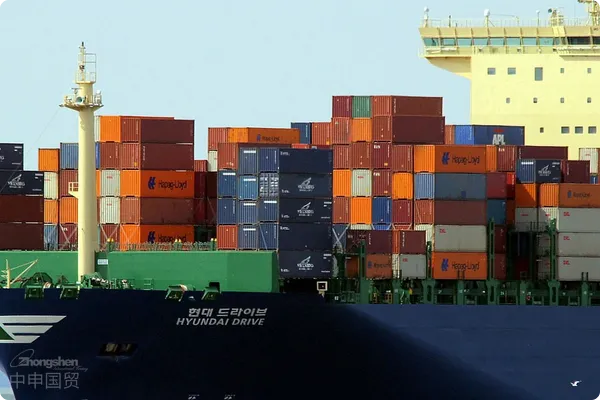- Shanghai Zhongshen International Trade Co., Ltd., with 20 years of experience in foreign trade import and export agency services.
- Service Hotline: 139 1787 2118

I. The "Roadblock" in the Import of Special Electromechanical Products
In the cold winter of 2022, we received an urgent commission from a precision machinery manufacturer in Taiwan—a batch of aviation-grade countersink sets worth $280,000 needed to be imported before the Spring Festival. These specialized tools, used for drilling and positioning aircraft skins, presented several import challenges: complex HS code classification (ultimately categorized under 8207.90.90), strict regulatory controls on electromechanical products, and involvement in...CCCApplication for Certification Exemption.
Through preliminary commodity pre-classification, it was found that the material (high-speed steel) and coating (titanium nitride) of the countersink sleeve directly affect the tariff rate (ultimately applying 8%). More critically, the original factory test report provided by the client did not include the RoHS testing items required by mainland customs. We immediately activated the contingency plan:
- Expedite the supplementary testing of six heavy metal contents in the Taiwan laboratory.
- Please prepare the application materials for the "Exemption from CCC Certification" simultaneously.
- Pre-manufacture Chinese warning labels that comply with GB standards.
II. The "Time Code" of Customs Clearance Procedures
The Capital Airport Customs implements a dual-key supervision model of "document review + inspection" for electromechanical products. Through historical data analysis, we have broken down the entire process into seven key nodes, with the fifth step, "inspection," accounting for as much as 85% of the total time consumption:
| Link | Standard duration | Optimized duration |
|---|---|---|
| Data Preparation | March 5th | 1.5 days (electronic pre-review) |
| Airport Tally | On the 2nd | 1st (VIP Channel Reservation) |
| Customs Document Review | 0.5 day | 0.2 days (pre-classification preliminary review) |
| Inspection operation | Days 15-18 | On the 9th (applied for "release after inspection") |
It is particularly noteworthy that we leveraged our AEO Advanced Certification status to apply for a guaranteed release of the goods even before the inspection was completed, enabling the client to obtain the urgently needed production materials 10 days ahead of schedule.
III. The "Golden Combination" of Application Materials
In response to the unique aspects of imports from the Taiwan region, we have developed the "3+5" core documentation system:
Basic Three Certificates
- ECFACertificate of Origin: The key to saving tariff costs lies in ensuring that Column 8 of the certificate clearly states "WO" (Wholly Obtained).
- Test report: Must include testing items required by mainland customs such as RoHS and REACH.
- Technical Specifications: A detailed explanation of the working principle is required to avoid being misjudged as restricted import equipment.
Auxiliary five-piece
- Chinese-English bilingual labels (including manufacturer contact information)
- Proof of Correspondence Between Component Number and Host Machine
- IATF 16949 system certificate of the Taiwanese supplier
- Declaration of Importer's Self-Use
- Filing Certificate for Goods Storage Location
IV. Industry Veterans' Guide to Success
With 15 years of agency experience, we have summarized the "Three Early Principles" for the import of electromechanical products:
Early pre-review: Complete HS pre-classification and regulatory condition verification before the shipment of goods.
Early communication: Establish a technical parameter confirmation channel with the Customs Inspection Division.
Prepare early.: Template for Advance Preparation Status Report of Sensitive Goods
In this case, we specifically utilized the "Import Clearance Simulation System for Electromechanical Products" to simulate three potential inspection scenarios in advance and prepared corresponding contingency plans. When customs requested a technical explanation for the "connection method between the countersunk collar and aircraft skin," we promptly retrieved the pre-stored 3D structural decomposition diagram, successfully passing the technical assessment.
V. The "Last Mile" of Cross-Border Logistics
Special attention is required for the pickup of special cargo at the Capital Airport:
- Reservation of oversized cargo loading/unloading platform requires 24-hour advance notice.
- Prepare an on-site unpacking plan for earthquake-proof packaging (requires customs supervision during unpacking).
- Arrange temperature-controlled transport vehicles with GSP certification.
We have specially configured an "Air-Land" intermodal tracking system, allowing customers to monitor the temperature and humidity records of their cargo in real-time throughout the entire journey from the aircraft cabin to the factory. Ultimately, this batch of countersunk sleeves was delivered to the customer in just 11 days from the moment the plane landed, which is 40% faster than the industry average.
This case demonstrates that professional customs brokerage firms can not only address one-time clearance issues but also:
1) Establish a product database to accumulate application experience.
2) Develop an intelligent declaration system to reduce human errors.
3) Establish a nationwide customs clearance network to achieve resource allocation.
Build a sustainable import supply chain advantage for enterprises.
Recommended for You
? 2025. All Rights Reserved. Shanghai ICP No. 2023007705-2  Shanghai Public Network Security Record No. 31011502009912
Shanghai Public Network Security Record No. 31011502009912










